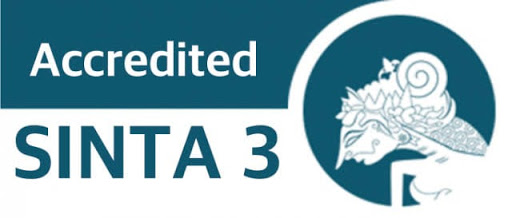A Learning Approach for The Identification of Network Intrusions Based on Ensemble XGBoost Classifier
Abstract
The limitation of signature-based Intrusion Detection systems has given rise for the popularity of Machine learning (ML) approaches r for building such intrusion detection systems (IDSs). ML is a sub-filed of Artificial Intelligence that enables algorithms to learn from data and its applications have been widely accepted and used in many domains. To achieve a promising ML-based model that can identify attacks and intrusions in networks and the cyber space, different stages of machine learning approach like pre-processing, attribute selection, model building, hyper parameter tuning can be very important. CICIDS2017 intrusion dataset was used for all the experimentations. This study focuses on building cyber threat detection model based on the ensemble feature selection and classification method. Innovative approaches were used for the analysis and pre-processing of the dataset. Thereafter, XGboost algorithm was used for selecting relevant features from the default input attributes in each of the captures. Thereafter, the reduced features were employed in the identification of cyber intrusions. The average accuracy achieved in the 8 captures of the dataset is 98% while precision is 0.98. Also, recall is 0.98, f1-score is 0.98 while AUC ROC score is 0.99. The study concluded that XGBoost-based model was able to achieve promising results based on the proper dataset encoding, feature importance-based feature selection and tuning of the algorithm for intrusion identification.
Downloads
References
H. Imtiyaz, "Sistem Pendukung Keputusan Budidaya Tanaman Cabai Berdasarkan Prediksi Curah Hujan," Jurnal Pengembangan Teknologi Informasi, Vol. 1 No 9, Pp. 733-738, 2017.
B. P. S. Sulsel, "Produksi Cabai Besar Provinsi Sulawesi Selatan Menurut Kabupaten/Kota (Kuintal), 2018- 2022," [Online]. Available: Https://Sulsel.Bps.Go.Id/Indicator/55/1097/1/Produksi-Cabai-Besar-Provinsi- Sulawesi-Selatan-Menurut-Kabupaten-Kota.Html. [Accessed 03 Januari 2023].
W. Rachman, "Sistem Pendukung Keputusan Pemilihan Bibit Cabai Rawit Menggunakankan Metode Simple Additive Weighting (Saw) Berbasis Web," Seminar Ilmu Komputer Dan Teknologi Informasi, Vol. 2 No 1, 2017.
C. Fadlan, "Penerapan Metode MOORA Pada Sistem Pemilihan Bibit Cabai (Kasus: Desa Bandar Siantar Kecamatan Gunung Malela)," E-Journal Universitas Asahan, Vol. 3 No 2, Pp. 42-46, 2019.
Rosita, "Penerapan Metode Moora Pada Sistem Pendukung Keputusan Pemilihan Media Promosi Sekolah," Metik Volume, Vol. 4 No 2, Pp. 55-61, 2020.
Prayogo, "Sistem Pendukung Keputusan Penentuan Tanaman Cabai Unggulan Menggunakan Metode Simple Additive Weighting (Saw) (Studi Kasus: Desa Poncowarno Lampung Tengah)," KOMIK (Konferensi Nas. Teknol. Inf. Dan Komputer), Vol. 1 No 1, Pp. 32-37, 2019.
D. I. Lestari, "Penerapan Metode Simple Additive Weighting Dalam Sistem Pendukung Keputusan Pemilihan Bibit Cabai," Jurnal Teknologi Dan Sistem Informasi, Vol. 1 No 3, Pp. 253-260, 2021.
R. Farid Hamdi, "Sistem Pendukung Keputusan Pemilihan Bibit Cabai Menggunakan Metode Weighted Product Berbasis Website Pada Pt. Natural Nusantara," Dspace Universitas Potensi Utama, 2019.
M. Kamis, "Sistem Pendukung Keputusan Pemilihan Benihcabai Unggul Menggunakan Metode Simple Multi Attribute Rating Technique," Jurnal Jaringan Dan Teknologi Informasi, Vol. 1 No 1 , Pp. 40-46, 2022.
M.Riadi, "Sistem Pendukung Keputusan (SPK)," 2022. [Online]. Available: Https://Www.Kajianpustaka.Com/2022/02/Sistem-Pendukung-Keputusan-Spk.Html?M=1. [Accessed 2022 September 28].
Fitriani, "Sistem Pendukung Keputusan Pemilihan Bibit Padi Unggul Menggunakan Metode Topsis Technique For Order Preference By Similarity To Ideal Solution," Buletin Sistem Informasi Dan Teknologi Islam, Vol. 3 No 4, Pp. 258-267, 2022.
T. Sains, "Proses Pengambilan Keputusan Multi Kriteria (Multicriteria Decision Making MCDM)," [Online]. Available: Https://Www.Caesarvery.Com/2018/10/Proses-Pengambilan-Keputusan.Html. [Accessed 29 October 2018].
Y. Mukhlisa, "Penerapan Metode Technique for Order Preference By Similarity To Ideal Solution (Topsis) Pada Sistem Pendukung Keputusan Pemilihan Menu Makanan Bagi Balita Yang Mengalami Kekurangan Gizi," Buletin Sistem Informasi Dan Teknologi Islam, Vol. 3 No 2, Pp. 150-156, 2022.
M. A. Mintarsih, "Aplikasi Pemilihan Bibit Budidaya Ikan Air Tawar Dengan Metode MOORA," Jurnal Sistem Informasi, Vol. 5341, Pp. 63-73, 2017.
R. A. Septi, "Sistem Pendukung Keputusan Penentuan Handphone Bekas Terbaik Menggunakan Metode Multiobjective Optimization on The Basis of Ratio Analysis (MOORA)," J. Ris. Komput, Vol. 5 No 1, Pp. 61-65, 2018.

Authors retain copyright and full publishing rights to their articles. Upon acceptance, authors grant Indonesian Journal of Data and Science a non-exclusive license to publish the work and to identify itself as the original publisher.
Self-archiving. Authors may deposit the submitted version, accepted manuscript, and version of record in institutional or subject repositories, with citation to the published article and a link to the version of record on the journal website.
Commercial permissions. Uses intended for commercial advantage or monetary compensation are not permitted under CC BY-NC 4.0. For permissions, contact the editorial office at [editorial email/contact form].
Legacy notice. Some earlier PDFs may display “Copyright © [Journal Name]” or only a CC BY-NC logo without the full license text. For the avoidance of doubt, authors hold copyright, and all articles are distributed under CC BY-NC 4.0. Where any discrepancy exists, this policy and the article landing-page license statement prevail.














